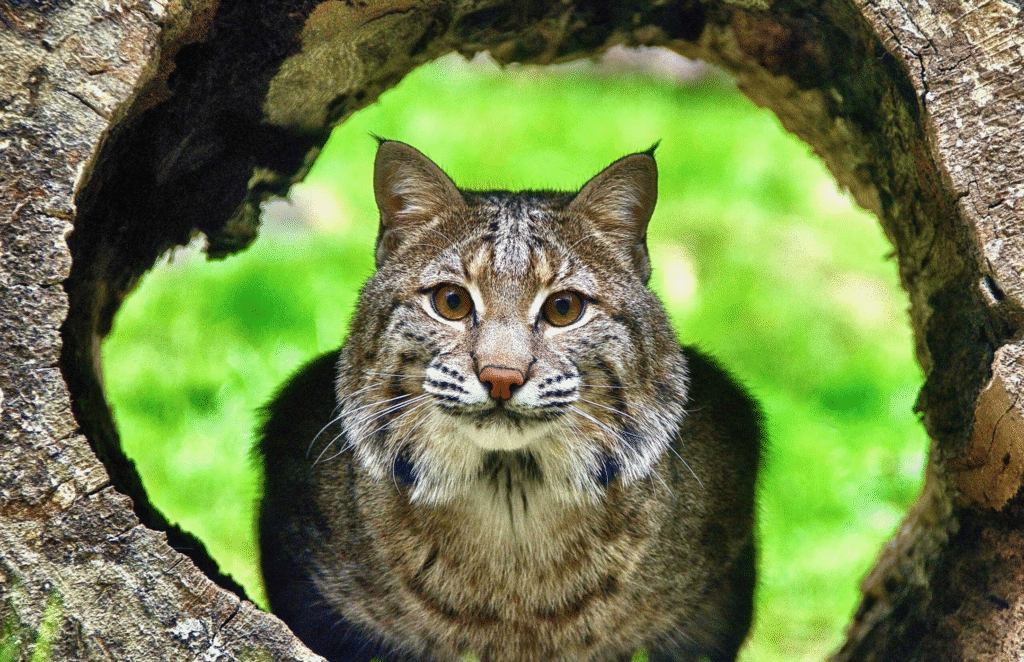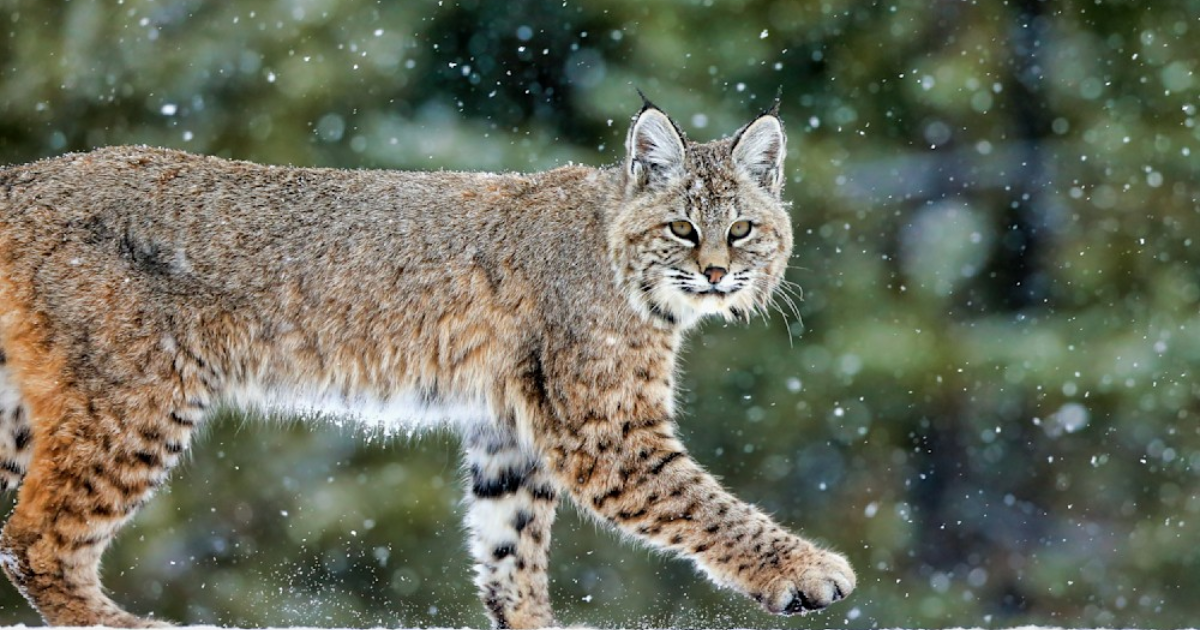Bobcat The bobcat (Lynx rufus) is one of North America’s most fascinating wildcats. Known for its stealth, adaptability, and elusive nature, this medium-sized feline has captured the curiosity of wildlife enthusiasts and researchers alike. Despite being widespread across the United States, the bobcat remains a master of camouflage, rarely seen but widely respected as an efficient predator.
In this article, we will explore the biology, behavior, habitat, and conservation of the bobcat — revealing the secrets of America’s stealthy wildcat.
Introduction to the Bobcat
What is a Bobcat?

The bobcat is a wild feline species native to North America, belonging to the genus Lynx. It is smaller than its cousin, the Canadian lynx, but larger than a domestic cat. Bobcats typically weigh between 15 and 35 pounds and measure about 2 to 4 feet long, including their distinctive short “bobbed” tail — which is the source of their name.
Distribution and Range
Bobcats are highly adaptable and inhabit a vast range across the United States, from dense forests and swamps to deserts and suburban areas. They are found from southern Canada to northern Mexico, with populations thriving in nearly every state.
Physical Characteristics
Appearance and Size
Bobcats have a tawny or reddish-brown coat with black spots or streaks, which provides excellent camouflage in their natural environment. Their ears are pointed and tipped with black tufts of fur, and their faces often display white markings around the eyes and nose.
Adaptations for Stealth and Hunting
Bobcats are designed for stealth. Their padded paws allow them to move silently through dense underbrush, and their sharp retractable claws help in gripping prey and climbing trees. Their keen eyesight and excellent night vision make them effective nocturnal hunters.
Behavior and Hunting Techniques
Solitary and Territorial
Bobcats are solitary creatures, maintaining territories that they mark with scent glands. Males tend to have larger territories that may overlap with several females, while females guard smaller areas centered around their dens.
Hunting and Diet
Bobcats are carnivorous predators with a diet that varies depending on location. They primarily hunt rabbits, hares, rodents, birds, and occasionally deer. Using stealth, patience, and a sudden burst of speed, bobcats ambush prey rather than chase it over long distances.
Communication
Though mostly silent, bobcats communicate through scent markings, visual cues, and occasional vocalizations such as hisses, growls, and mating calls.
Habitat and Adaptability
Preferred Habitats
Bobcats thrive in diverse habitats including deciduous and coniferous forests, swamps, deserts, and even suburban fringes. They prefer areas with dense cover for stalking prey and ample sources of water.
Urban Encounters
Increasingly, bobcats are spotted near urban areas due to habitat loss and the availability of food such as rodents and small pets. However, they remain cautious of humans and usually avoid direct contact.
Reproduction and Life Cycle
Mating Season and Gestation
Bobcats typically mate from late winter to early spring. After a gestation period of about 60 to 70 days, females give birth to litters of two to four kittens.
Raising the Young
The mother bobcat cares for her kittens in a den, teaching them to hunt and survive until they become independent at about 6 months old.
Lifespan
In the wild, bobcats live approximately 10 to 12 years, though they can live longer in captivity.
Threats and Conservation
Natural Threats

Bobcats face threats from larger predators such as mountain lions and wolves. Disease and harsh weather can also impact their survival rates.
Human Impacts
Habitat destruction, vehicle collisions, and illegal hunting pose significant risks. Bobcats are sometimes trapped or hunted for their fur, although regulated hunting seasons exist in many states.
Conservation Efforts
Bobcats are currently listed as a species of “Least Concern” by the IUCN, thanks to their adaptability and wide distribution. Conservation efforts focus on habitat preservation, public education, and research to ensure populations remain stable.
Interesting Facts About Bobcats
- Bobcats can leap up to 10 feet horizontally, which helps them catch prey or evade danger.
- They are excellent swimmers and climbers.
- Unlike domestic cats, bobcats have black-tipped tails with a white underside.
- Bobcats communicate with a variety of sounds including yowls, screams, and purrs during mating season.
Also Read : Red Fox In The Wild: Master Of Adaptation And Survival
Conclusion
The bobcat is a remarkable example of nature’s adaptability and stealth. Despite living in a world increasingly dominated by humans, this wildcat continues to thrive across a broad range of habitats in North America. Understanding the bobcat’s behavior, habitat needs, and challenges can help us appreciate and protect this elusive feline for generations to come.
Their secretive nature and survival skills make bobcats a captivating subject for wildlife lovers, reminding us of the wild mysteries still present in our environment. Whether spotted in a dense forest or a suburban backyard, the bobcat remains a powerful symbol of the untamed American wilderness.
Frequently Asked Questions (FAQs)
Are bobcats dangerous to humans?
Bobcats are generally shy and avoid humans. They rarely attack people unless cornered or threatened, so they pose little danger to humans.
What do bobcats eat?
Bobcats primarily eat rabbits, hares, rodents, birds, and occasionally deer or livestock if available.
How can I identify a bobcat from other wildcats?
Bobcats have short “bobbed” tails with black tips and spotted fur. They are medium-sized, larger than domestic cats but smaller than mountain lions.
Can bobcats live in urban areas?
Yes, bobcats can adapt to urban and suburban environments but prefer areas with dense vegetation and access to prey.
How do bobcats mark their territory?
Bobcats mark their territory using scent glands located on their face, paws, and tail, leaving scent marks on trees and rocks.





